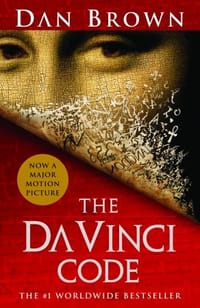在线阅读本书
Book Description
Where there's a CODE there's a COD ...
In the not so distant past, a man had a Very Cunning Theory which he wrote down in a book, and it proved to be very popular indeed. In the very distant past, a man was born who had a wife, who had a child, who grew up and had children in turn, and so there was a bloodline stretching to today. And Leonardo da Vinci knew all about it and recorded it in a painting for everyone to see, despite lots of Bad People trying to cover up the whole thing. And the man with the Very Cunning Theory figured all this out from lots of clues and pictures that Leonardo da Vinci had cunningly concealed, and then published it for everyone to see.
But then it turned out that this Very Cunning Theory was Not So Cunning After All because it wasn't true. Not even remotely. Not even a tiny bit likely. Which is where this book comes in.
Because it turns out that although Leonardo da Vinci didn't know anything at all about a holy bloodline extending to the present day, he knew a very great deal indeed about what cod really are, and that sinister knowledge is only now coming to light ...
Fishclaimer
This book has not been authorized or endorsed by Dan Brown or his publishers, but it is much, much funnier.
From Publishers Weekly
The unexplained and sinister popularity of the millennium's second biggest literary sensation is probed in this funny spoof of the Dan Brown bestseller. A London curator is found dead with a cod shoved down his throat beneath the mysterious message, "THE CHATHOLIC [sic] CURCH HAD ME MURDERED!" Applying his brilliant code-breaking skills, "anagrammatologist" Robert Donglan rearranges the letters to get "H! THE CCC COME HARD, HURDLE A COLT," a clue that entangles him with French secret agent Sophie Nudivue; a priest-cryptographer; a brutal killer known as the Exterminator; and the suppressed works of Leonardo da Vinci's more talented sister, Eda. Brine, aka London University literature prof Adam Roberts, tweaks many of The Da Vinci Code's conceits to preposterous effect as his characters puzzle out an all-embracing super-plot, trace the ominously fish-shaped layout of London's streets and discover a mytho-historical counternarrative that makes Catholic dogma seem eminently reasonable. But he also uncovers and parodies a startling pattern of bad writing—involving sloppily redundant dialogue; pointless, factoid-filled digressions; and tiresome red herrings—that appears again and again in seemingly unrelated Code-style thrillers. Coincidence? Or does it point to a hidden conspiracy in the publishing industry to pad potboilers with overstuffed filler in order to justify high prices? Readers will laugh at Brine's revelations but may not easily be able to dismiss them. (Oct. 18)
Book Dimension
length: (cm)19.7 width:(cm)12.8
丹·布朗(Dan Brown, 1964- ),美国畅销作家。毕业于阿默斯特学院,曾是一名英语教师。1996年开始写作,先后推出了《数字城堡》、《骗局》和《天使与魔鬼》3部小说,均取得了不错的销售成绩,其中以《天使与魔鬼》最为成功,奠定了他在小说界的地位。《达·芬奇密码》是他的第4部作品,出版后成为有史以来最为畅销的小说之一。布朗的作品已被翻译成多种文字,在世界范围内广为流传。

